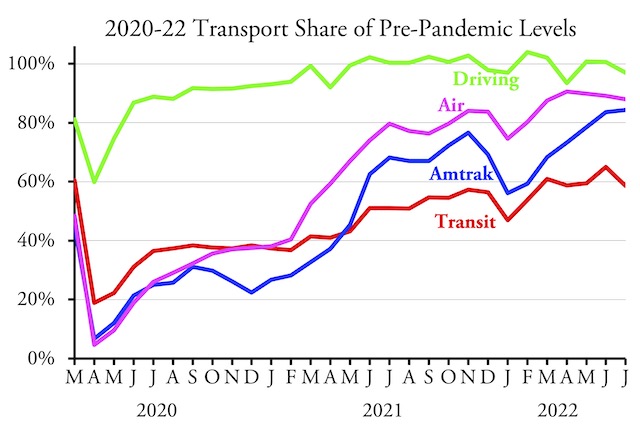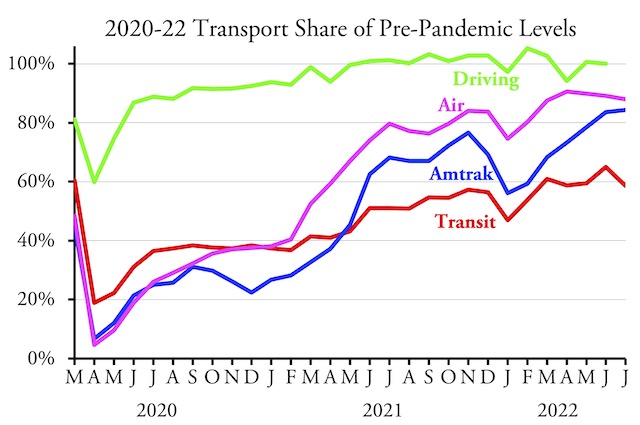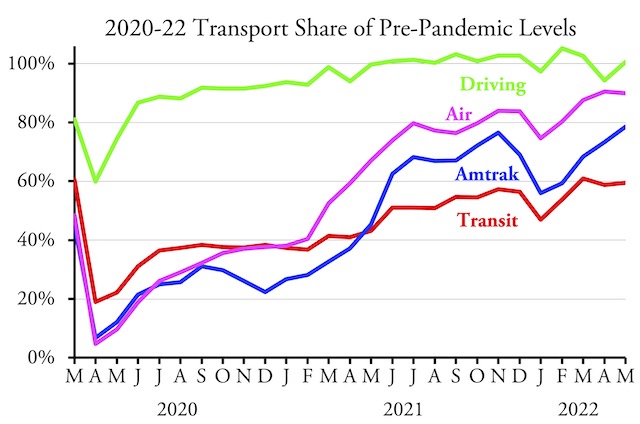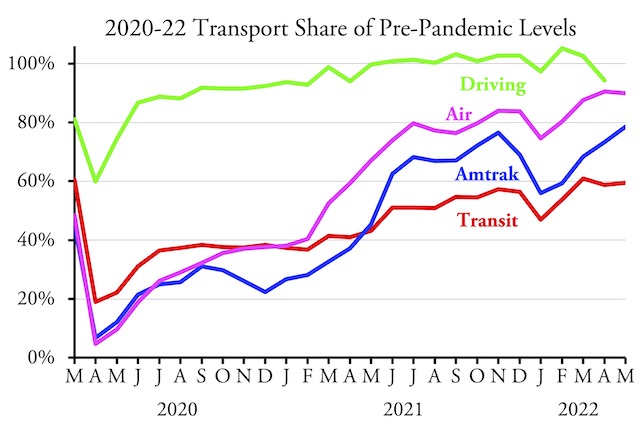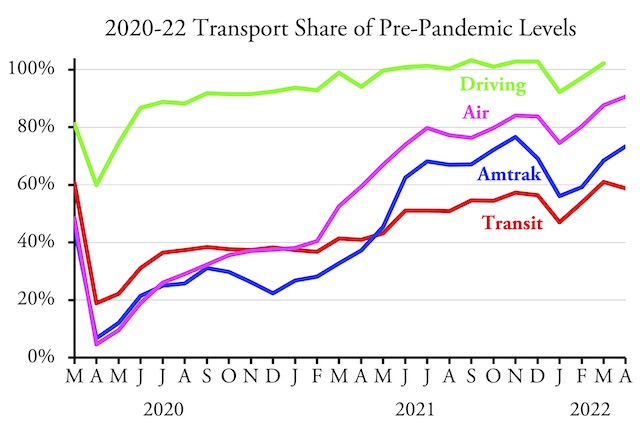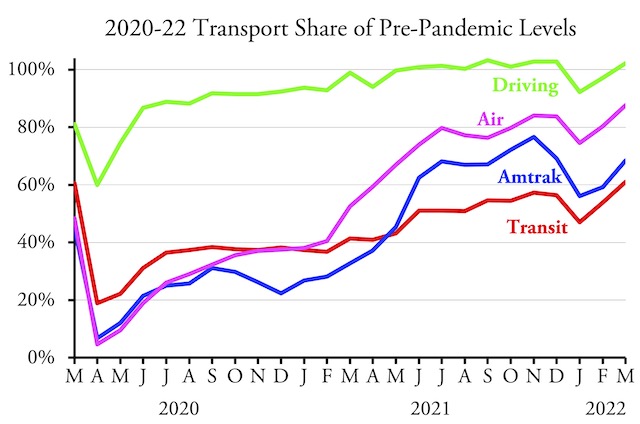Between 40 and 50 percent of workers in 13 American cities telecommuted in 2021, according to the recently released American Community Survey (discussed here previously). The record is Fremont, California (outside of Oakland), where 48.9 percent telecommuted. More notable, three — possibly four, depending on how you count* — of the 13 cities are central cities, including San Francisco, Seattle, and Washington.
| City | State | Telecommuters | 2021 Jobs | Change from 2019 | Change in Transit Commuters | Change in Drive Alone Commuting |
|---|---|---|---|---|---|---|
| Fremont | CA | 48.9% | 112,508 | 24,873 | -81.6% | -17.9% |
| Arlington | VA | 48.8% | 142,653 | -6,747 | -79.2% | -34.2% |
| Washington | DC | 48.3% | 353,845 | -32,033 | -68.8% | -28.9% |
| Bellevue | WA | 48.1% | 74,006 | -6,368 | -80.3% | -37.5% |
| Sunnyvale | CA | 47.1% | 81,435 | -3,936 | -68.0% | -45.9% |
| Seattle | WA | 46.8% | 438,357 | -23,131 | -75.8% | -30.8% |
| Berkeley | CA | 46.5% | 57,877 | -3,989 | -84.4% | -16.5% |
| San Francisco | CA | 45.6% | 438,886 | -87,136 | -73.9% | -22.8% |
| Cambridge | MA | 44.4% | 70,450 | -816 | -58.9% | -31.4% |
| Cary | NC | 44.2% | 91,393 | 2,320 | 37.3% | -34.2% |
| Newton | MA | 43.9% | 45,504 | -579 | -68.9% | -36.0% |
| Boulder | CO | 42.6% | 55,376 | -3,192 | -72.5% | -28.9% |
| Santa Clara | CA | 40.2% | 68,880 | -6,756 | -80.1% | -42.9% |
Most of these 13 cities saw 70 percent or more declines in transit commuters since 2019. The major exception was Cary, North Carolina. However, the survey numbers for Cary are questionable. Transit’s share of Cary workers went from 0.3 to 0.4 percent. Because these numbers are so small, the margins of error are large. The Census Bureau reported 295 plus or minus 233 transit commuters in 2019 and 405 plus or minus 348 in 2021. Since the error terms overlap, the change from 2019 to 2021 isn’t statistically significant. Continue reading


